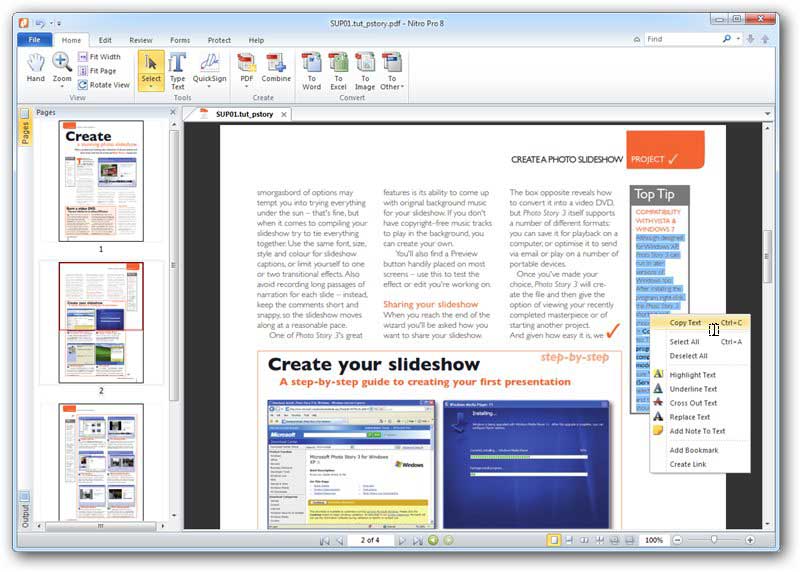

There’s collaboration and review tools in the form of virtual sticky notes, a typing tool for adding text to the page, and options for filling in forms electronically.ĭespite all these features, the program is simple to use thanks in part to its ribbon interface, ensuring all the main features are accessible with a simple click. Nitro will also allow you to view web-hosted PDFs from inside your browser (assuming it’s IE, Firefox or Chrome). There’s QuickSign, for converting your handwritten signature into a stamp for placing on PDFs. Nitro Reader is bursting with additional features, some of which you won’t find elsewhere. Version 2.0 debuted a completely redesigned creation engine that promises to be up to four times faster while producing final PDFs that 50 per cent smaller than with previous versions. Nitro has two options for creating PDFs: either convert a file directly from one of over 300 supported formats (including HTML, Microsoft Office and plain text), or use the application’s own virtual print driver. Now Nitro Reader is here and it's giving Adobe Reader some serious competition. For a long time, Adobe had the market all to itself, but in recent years a crop of free alternatives have sprung up, all keen to grab a slice of its market.
Most people use Adobe Reader to view PDF files, and are perfectly happy to do so, despite the fact little has changed since it first appeared on the scene. It doesn’t matter if you’ve written a Word document, put together a spreadsheet or laid out a brochure or invitation, exporting it to PDF means the outside world can easily view and print it with the help of free software. The key reason for the success of the PDF format is that it allows you to view a document exactly the way it was created without having to open it in another application first.


 0 kommentar(er)
0 kommentar(er)
